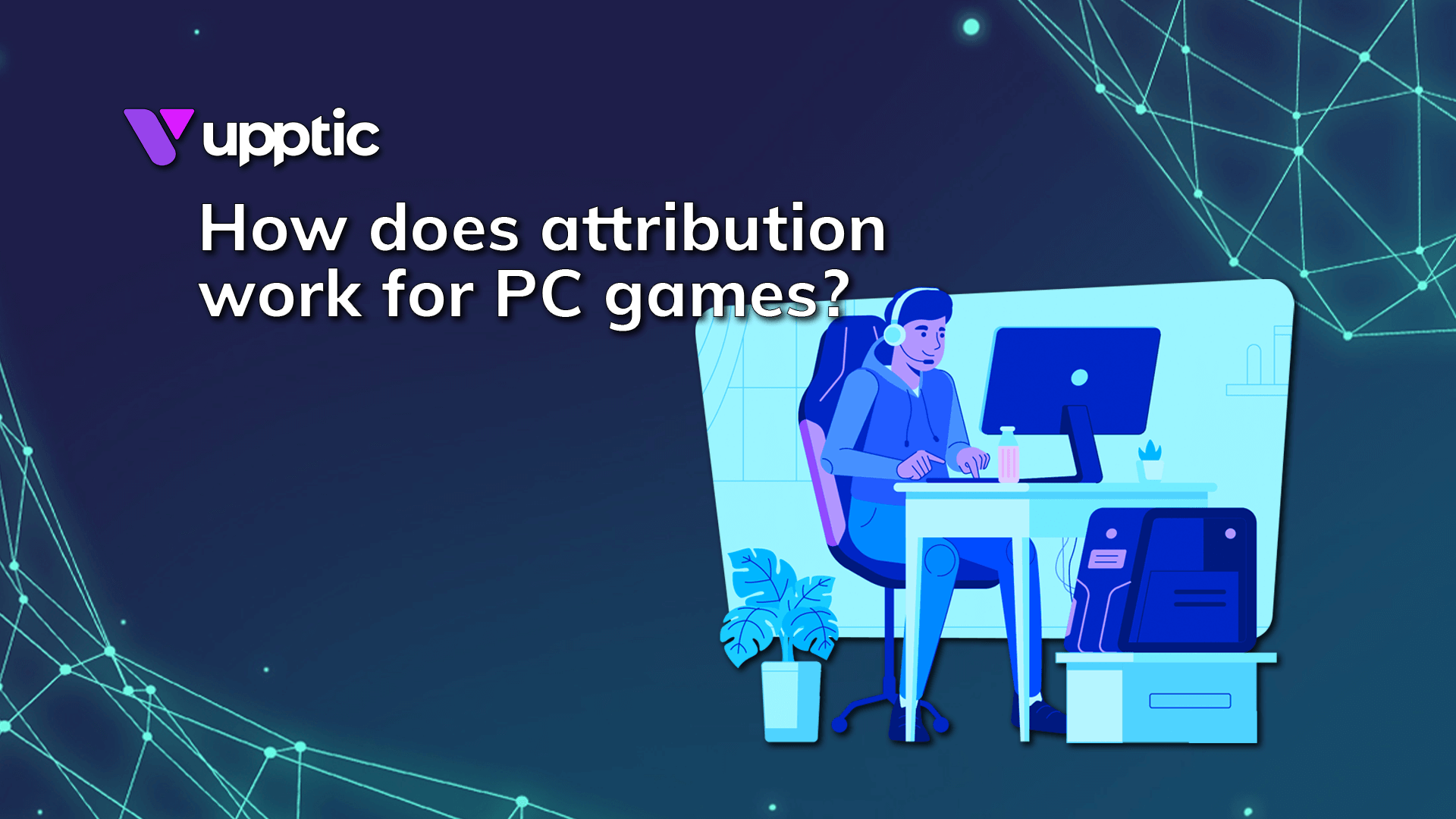As the PC gaming industry continues to evolve, game developers, marketers, and publishers are constantly seeking ways to reach and engage their target audience.
One key aspect of this is game attribution, which involves identifying the sources that drive players to discover and purchase a game. From understanding the impact of paid advertising campaigns to leveraging data analytics and user feedback, effective game attribution can make all the difference in driving player engagement and boosting revenue.
So whether you’re a seasoned game company or a newcomer to the industry, read on to discover the essential strategies for mastering game attribution and achieving success in the world of PC gaming.
- What is PC game attribution?
- The importance of game attribution
- Players in PC game attribution and reporting
- Game attribution models
- Best practices for game attribution
- Challenges and limitations of game attribution
- Future trends in game attribution
- Key takeaways
What is PC game attribution?
Game attribution refers to the process of identifying and assigning credit to the sources or channels that drive downloads, installations, or purchases of PC games. Essentially, it’s a way for game developers and publishers to track and analyze the effectiveness of their marketing and advertising efforts, as well as the impact of other factors such as user reviews and word-of-mouth referrals.
There are several methods of game attribution that can be used to track the sources of player engagement and purchases. One common method is through the use of tracking links, which are unique URLs that are created for each marketing campaign or promotion. When a player clicks on the link and installs or purchases the game, the source of the click is recorded and attributed to that particular campaign.
Another method of game attribution is through the use of referral codes. These codes are typically shared by existing players with their friends or social media followers, and can be used as a tracker to trace the impact of user-generated content on game downloads and purchases. For example, if a player shares their referral code on social media and several of their followers use the code to download or purchase the game, the original player would receive credit for those downloads.
Finally, analytics tools can also be used for game attribution by tracking user behavior and engagement across different channels and platforms. By analyzing data on downloads, installations, purchases, and other key metrics, developers and publishers can gain valuable insights into which marketing campaigns and channels are driving the most engagement and revenue.
The importance of game attribution
Game attribution is a crucial tool for game developers and publishers seeking to optimize their marketing strategies and advertising models to maximize revenue growth. By tracking the sources of player engagement and purchases, developers can gain valuable insights into which marketing campaigns and channels are most effective in driving downloads and revenue.
This enables them to allocate resources more efficiently, optimizing marketing strategies by focusing their money on the channels and campaigns that are driving the most ROAS (return on ad spend). This can lead to a significant increase in downloads and revenue for developers and publishers.
Players in PC game attribution and reporting
There are a few key players that game developers and publishers can turn to for PC game attribution and reporting services, ranging from marketing dashboards to fraud prevention tools – and beyond.
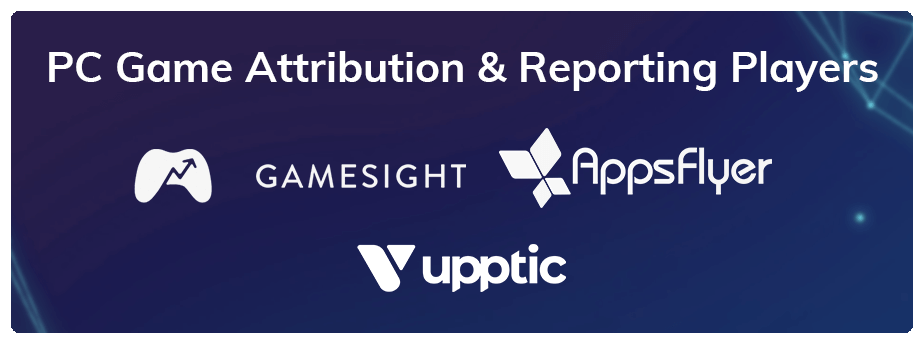
PC/Desktop native attribution products
Gamesight
Gamesight is the preeminent PC game attribution platform that provides real-time data and analytics, as well as advanced audience segmentation and engagement features. They also offer fraud prevention tools and integration with popular ad networks and marketing platforms.
Mobile attribution products with PC offerings
AppsFlyer
AppsFlyer is a leading mobile attribution platform. They can also connect to gaming platforms such as Windows PC and Steam through SDK and API integrations. Their platform provides attribution, analytics, and fraud prevention tools, as well as advanced audience segmentation and engagement features.
PC and cross-platform analytics
Upptic
Upptic offers PC game reporting and analytics – along with Android, iOS, and other platforms – on their Games Growth Platform. Upptic’s PC cross-platform reporting is designed to help game developers and publishers optimize their marketing spend and improve their user acquisition and engagement strategies.
Game attribution models
In the PC gaming industry, game attribution models are used to measure the effectiveness of various marketing channels in driving user acquisition and game installs. Some of the common game attribution models include first-touch attribution, last-touch attribution, multi-touch attribution, and view-through attribution.

First-touch attribution
This attribution model attributes conversion credit for the game install to the first marketing touchpoint that the user interacted with. For example, if a user clicked on a Facebook ad and installed the game, the credit would be given to the Facebook ad. The pros of first-touch attribution are that it is easy to implement, and it gives credit to the first marketing touchpoint that introduced the user to the game. However, it does not account for any other marketing touchpoints that may have contributed to the user’s decision to install the game.
Last-touch attribution
This model attributes the game install to the last marketing touchpoint that the user interacted with before installing the game. For example, if a user clicked on a Facebook ad, but did not install the game, and then later saw a Google ad, clicked on it, and installed the game, the credit would be given to the Google ad. The pros of last-touch attribution are that it gives credit to the last marketing touchpoint that led to the game install, and it is easy to implement. However, it ignores the impact of any previous marketing touchpoints that may have influenced the user’s decision to install the game.
Multi-touch attribution
This model attributes the game install to multiple marketing touchpoints that the user interacted with before installing the game. For example, if a user clicked on a Facebook ad, but did not install the game, and then later clicked on a Google ad, and installed the game, the credit could be divided among the Facebook and Google ads. The pros of multi-touch attribution are that it gives credit to all the marketing touchpoints that contributed to the user’s decision to install the game, and it provides a more complete picture of the user’s journey. However, it is more complex to implement and may require additional data and tools for accurately measuring the impact of each touchpoint.
View-through attribution
This technique attributes the game install to users who saw an ad but did not click on it, but later installed the game. For example, if a user saw a YouTube ad but did not click on it, but later installed the game, the credit would be given to the YouTube ad. The pros of view-through attribution are that it accounts for users who were influenced by an ad but did not click on it, and it provides a more comprehensive view of the marketing campaign’s effectiveness. However, it is challenging to measure accurately, and it may overestimate the impact of certain marketing channels.
Each attribution model has its strengths and weaknesses, and the choice of which one to use depends on the specific goals and objectives of the marketing campaign. A first-touch attribution model may be suitable for a campaign focused on brand awareness, while a multi-touch attribution model may be more appropriate for a campaign focused on user acquisition. Understanding the pros and cons of attribution models is critical in ensuring accurate measurement of marketing performance and making data-driven decisions about marketing spend.
Best practices for game attribution
To implement game attribution effectively, it’s essential to set up tracking links that can accurately trace the source of each download. By using analytics tools, you can track user engagement, acquisition, and retention data and gain insight into your game’s user acquisition funnel. Additionally, integrating attribution data into your marketing campaigns can help you optimize your ad spend and marketing budget to drive better results.
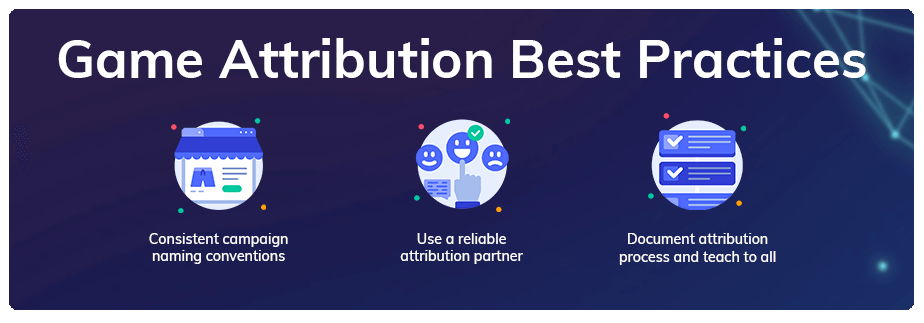
Challenges and limitations of game attribution
It is important to note that there are several challenges and limitations when it comes to game attribution – which all require unique strategies to address.
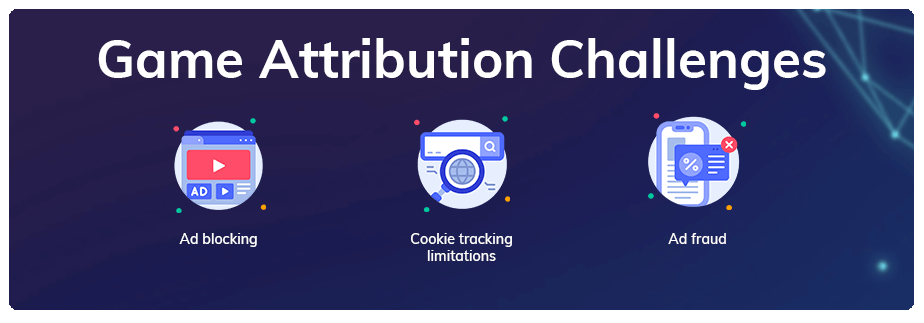
Another limitation of game attribution is the limitations of cookie tracking. Many web browsers now restrict the use of third-party cookies, which makes it difficult to track user behavior across different websites and devices. This limitation makes cross-device attribution particularly challenging, as it is difficult to connect the dots between a user’s behavior on different devices. To overcome this challenge, advertisers can consider using alternative methods such as device graph technology, which uses probabilistic modeling to connect devices and track user behavior across different platforms.
Ad fraud is another significant challenge when it comes to game attribution. Ad fraud refers to the deliberate use of fraudulent practices to generate fake installs or clicks, which can inflate ad spend and skew attribution data. This challenge is particularly relevant in the mobile app industry, where app install fraud is a growing concern, but extends to PC and console gaming as well – especially as these platforms become more connected to the mobile marketing ecosystem.
To mitigate ad fraud, advertisers can use fraud prevention tools and work with ad networks and partners who have a strong reputation for quality and transparency. Additionally, advertisers can consider implementing a multi-layered approach that includes both pre- and post-install fraud prevention techniques to catch and prevent fraudulent activity before it impacts attribution data.
Future trends in game attribution
As the PC gaming industry continues to grow, emerging technologies such as machine learning, AI-powered attribution, and blockchain-based attribution are changing the way game attribution works. These technologies are expected to have a significant impact on the future of game attribution.
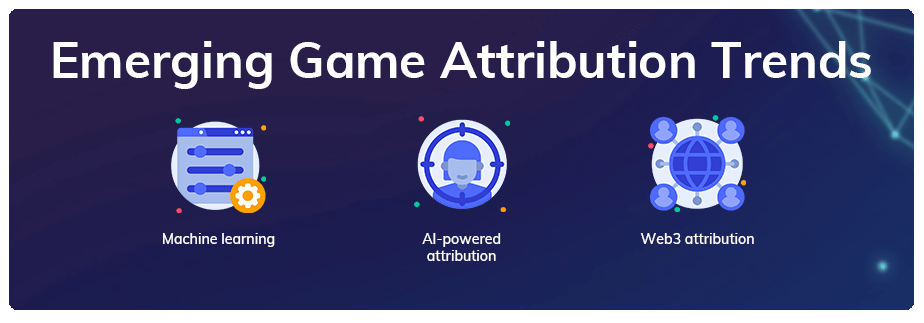
Another emerging trend in game attribution is AI-powered attribution. With AI-powered attribution, game developers can automatically identify the sources of their installs and other conversions. This technology can help developers save time and resources by automating the process of tracking user behavior. Additionally, AI-powered custom attribution models can provide more accurate and reliable data than traditional attribution methods.
Finally, blockchain-based attribution, or web3 attribution, is another emerging trend in game attribution – spearheaded by companies like Spindl and Safary. With web3 attribution, developers can track user behavior on an immutable ledger. This technology can help prevent fraud and improve the accuracy of attribution data. Additionally, blockchain-based attribution can provide users with more transparency and control over their data.
Key takeaways
It’s clear to see that game attribution is a crucial aspect of the PC gaming industry. It allows game developers and publishers to identify and assign credit to the sources and events that drive players to discover and purchase their games.
By using various game attribution techniques, developers and publishers can gain valuable insights into which marketing campaigns and channels are most effective in driving downloads and revenue. Proper game attribution leads to improved ROI for marketing campaigns and optimized marketing strategies, which can significantly increase downloads and revenue, making all the difference in achieving success in the world of PC gaming.
If you’re ready to take your PC game attribution to the next level, reach out to us at Upptic.

